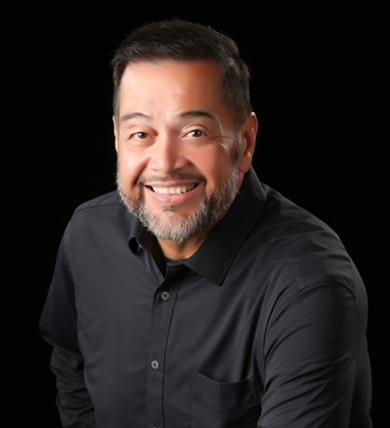
ChatGPT and Higher Education: PAU Professors Weigh In

Eduardo Bunge, PhD
Whether it’s calculators, search engines, or #ChatGPT, technology has fundamentally shifted traditional teaching in many ways over the years. With each new technology, educators have either resisted change and created bans or adapted and figured out how to use the technology for a greater benefit. ChatGPT is the newest technology up for debate, bringing concerns about ethics and academic integrity to higher education, but also being discussed as a powerful tool for teaching and research.
To discuss where Palo Alto University (PAU) faculty members stand on the topic, PAU’s Center for Educational Excellence (CEE) created a faculty training covering the strengths and weaknesses of ChatGPT and how to best utilize it at PAU. The video training featured experts Eduardo Bunge, PhD, associate chair of the PAU psychology department and director of the Technology and Mental Health concentration of PAU's Master of Psychology degree program, and Carl Sheperis, PhD, vice provost at Kutztown University of Pennsylvania, who has 20 years of experience working with technology and higher education. The training was moderated by Cristen Wathen, PhD, associate professor in the PAU counseling department and director of the CEE, which supports PAU’s vision of providing excellent pedagogical support for its faculty, early career instructors, and students.
“I’m very excited about the use of ChatGPT in higher education. It will help advance science at a faster speed, and the more science we create, the more lives that can be saved or improved,” says Dr. Bunge. “It's such a powerful tool, and some people are afraid of that power, but I say let’s embrace it.”
Not all professors are so excited. With artificial intelligence that can pass the bar exam and medical boards, many educators across the country are hesitant to use such powerful technology. Since ChatGPT publicly launched in December 2022, many educators have had two main concerns: will students use it to cheat on their assignments, and will there be a degradation of critical thinking skills?
“Although these fears are valid, I think they shouldn’t distract us from considering the many ways that we, as faculty members and higher education administrators, can use ChatGPT to our advantage,” says Dr. Sheperis. “Students have free access to ChatGPT whether we like it or not, so we might as well learn how to use it and be upfront with our students about how it can be used with integrity in their classes. And, we can teach students how to use ChatGPT to enhance their critical thinking skills.”

Carl Sheperis, PhD
What is ChatGPT and How Can it be Used in Higher Education
ChatGPT, released on November 30, 2022, is a language-based technology developed by a company called Open AI. GPT stands for generative, pre-transformer architecture. The technology creates natural-sounding copy similar to human language, produced for a wide range of applications. There have been multiple iterations of ChatGPT, including as an app on iPhones for text messaging, embedded into Microsoft Word for writing documents, and performing numerical calculations in Microsoft Excel. ChatGPT can be used in higher education in many ways, particularly to save time by automating rote tasks. For example, it can support the admissions office by automating the time-consuming tasks of processing student applications and sending out emails to potential students. “In higher education, we are working with large data sets, so ChatGPT can take care of data analysis and rote tasks that would otherwise be incredibly time-consuming,” says Dr. Wathen. “Since ChatGPT can help automate some of our work, I see it as a great way to help us have more work-life balance.”How ChatGPT Can Enhance Research
Other tasks that ChatGPT can make more time efficient are generating AI-driven images, finding common themes in research, and analyzing numerical data sets, all of which can benefit research. Dr. Bunge is using ChatGPT in his Children and Adolescents Psychotherapy and Technology (CAPT) research lab where he is working with students to create a chatbot for parents who have children with mental health concerns. “My students and I are testing ChatGPT with questions that parents are asking us, and the results are pretty interesting,” says Dr. Bunge. “ChatGPT usually provides a very general outcome, so what we are doing is gathering context from the parents to get more personalized responses.” Dr. Bunge says that ChatGPT also helped the team re-write the consent form so that it was at an elementary-grade reading level and quickly identified common themes found in the responses from parents. “It blew my mind. Four researchers spent two weeks with students looking at thousands of user comments figuring out the common themes. Afterward, a student had the idea to ask ChatGPT ‘What are the common themes in these comments?’ In only 30 seconds, it came up with the same themes that took us two weeks to figure out,” says Dr. Bunge. “ChatGPT is like having a colleague there to do the rote tasks. But it’s an assistant, not an oracle—there are many things it doesn’t know, so we always double check its accuracy. But with this amazing assistant, we can do research faster.”
Cristen Wathen, PhD
How ChatGPT Can Enhance Teaching
Higher education professors can utilize ChatGPT in a variety of ways, from making grading and curriculum revisions more efficient, to facilitating more engaging lessons in their class. Here are just a few ways that professors can utilize ChatGPT in their classes:- Faster student evaluations and assessment
- Faster design and revision of curriculum
- Write a psychological report
- Create an interprofessional treatment plan
- Create different personas for role play in counseling skills class
- Critical thinking and fact-checking of ChatGPT results. Professors can say to students: “This is what ChatGPT says about this topic. Do you agree or disagree, and why? How can we improve this ChatGPT result to make it more relevant or accurate?”
- Students can learn to write effective prompts to yield compelling answers from ChatGPT
How Professors can introduce ChatGPT into the classroom
From the CEE Resources on Academic Integrity at PAU:- First, acknowledge and reflect on your thoughts and emotions about ChatGPT. Read, listen, and learn more before determining your perspective on this technology.
- Have a discussion with your students about Artificial Intelligence and ChatGPT. How do they see and understand the use of AI in their education? What are the pros for students and faculty, what are the cons? What do they see as the ethical considerations?
- Be transparent and specific about your expectations on the use of AI in your course. Consider incorporating a syllabus policy on AI for your course.
- Reflect on your assignments and their purposes- how can you use this technology as a way to engage your students and to talk about critical thinking and deeper learning? Are there particular assignments you can integrate AI?
